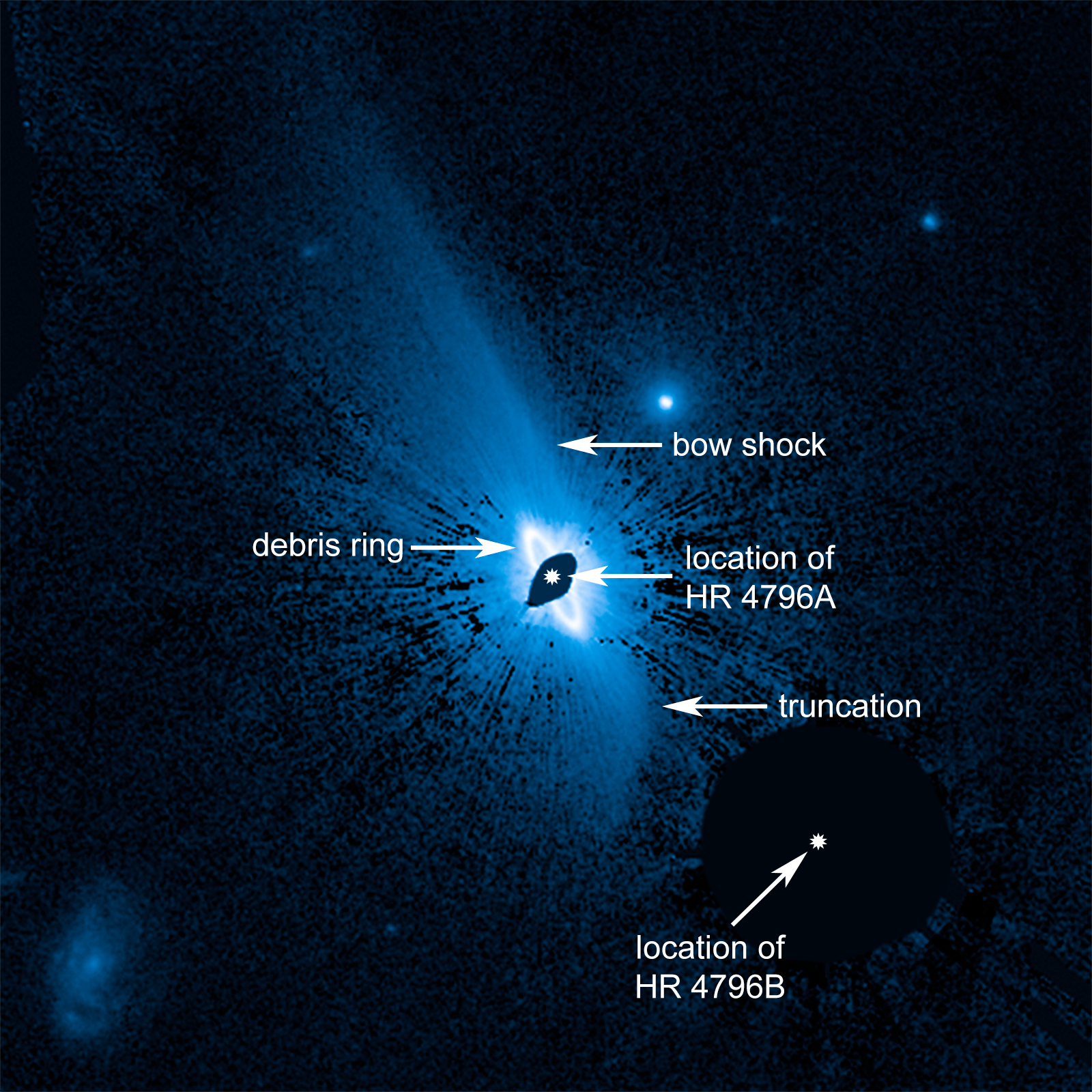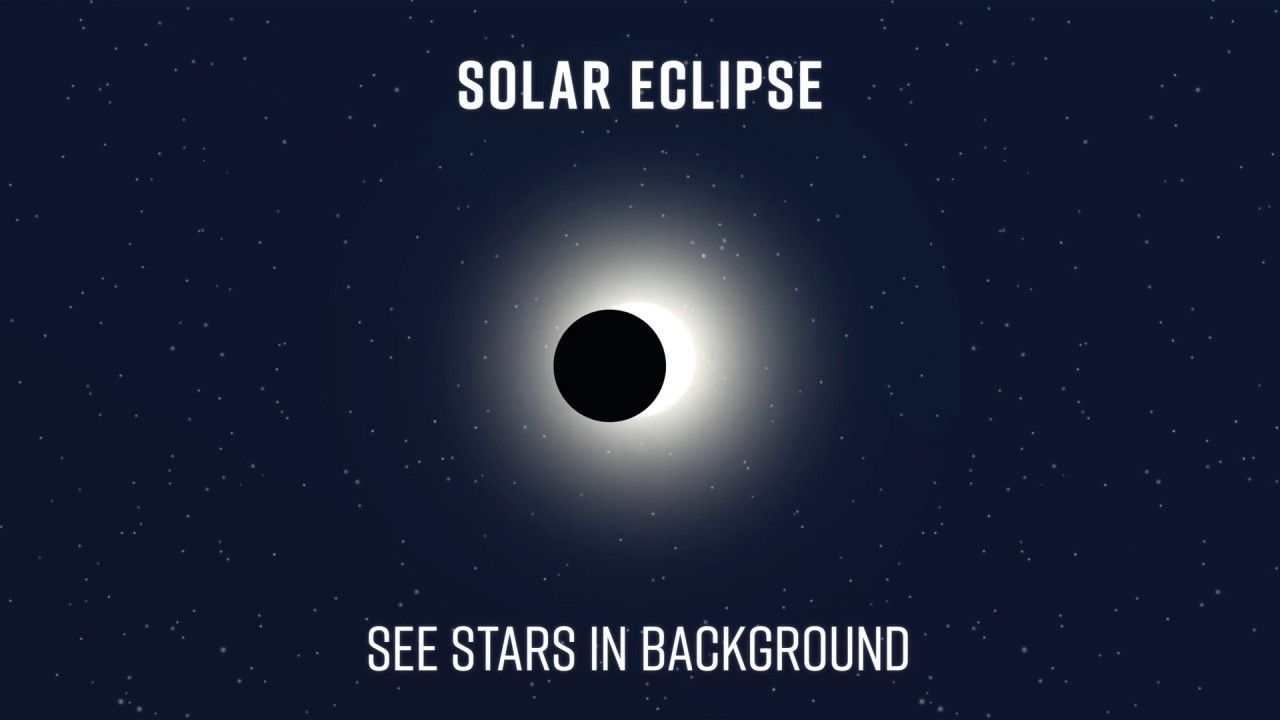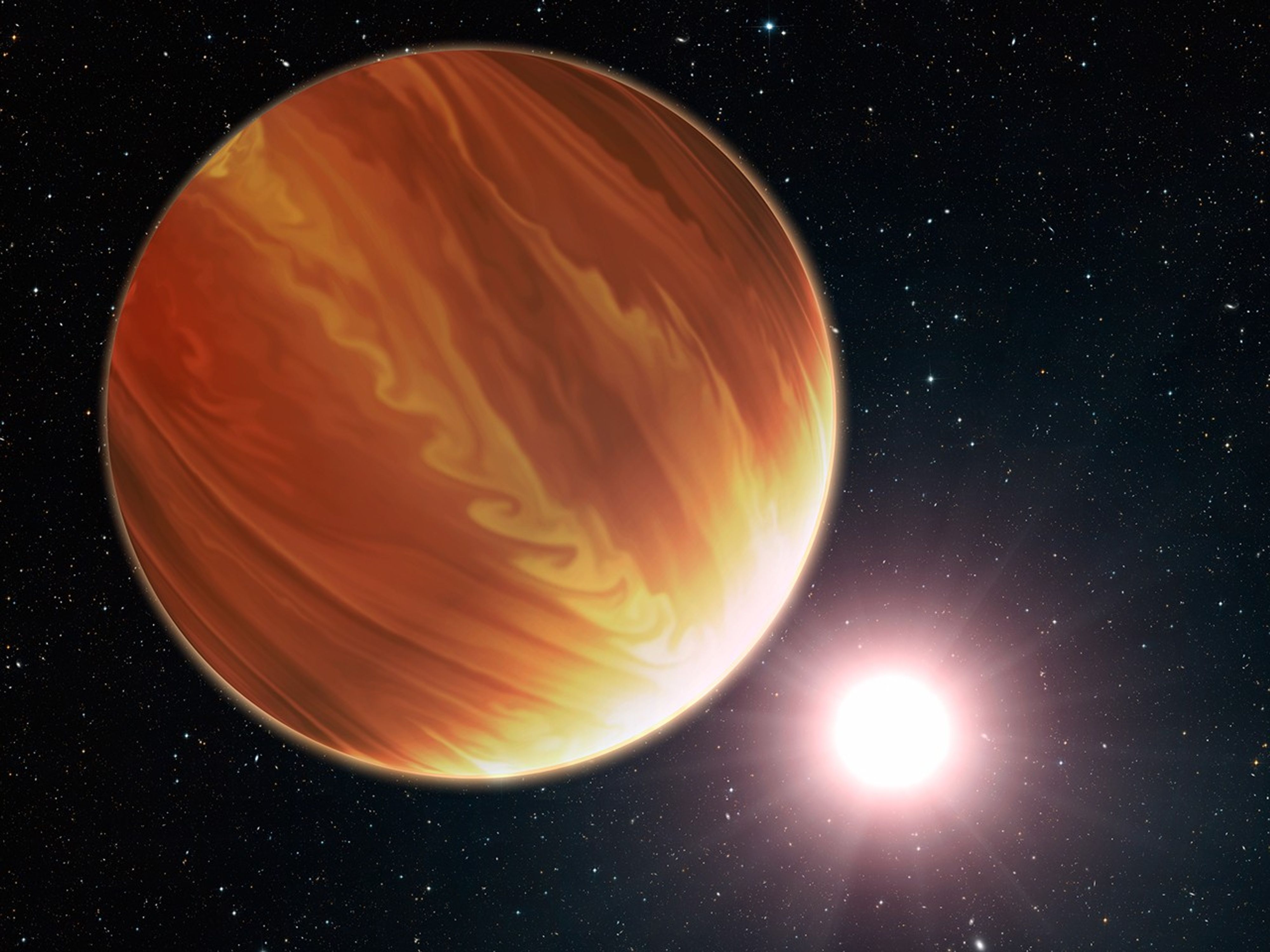1 min read
Circumstellar Disk Around HR 4796A (Hubble)

One of the targets Webb will study is the well-known, giant ring of dust and planetesimals orbiting a young star called HR 4796A. This Hubble Space Telescope photo shows a vast, complex dust structure, about 150 billion miles across, enveloping the young star HR 4796A. (The light from HR 4796A and its binary companion, HR 4796B, have been blocked to reveal the much dimmer dust structure.) A bright, narrow inner ring of dust encircling the star may have been corralled by the gravitational pull of an unseen giant planet.
About the Object
- R.A. PositionR.A. PositionRight ascension – analogous to longitude – is one component of an object's position.12:36:01.03
- Dec. PositionDec. PositionDeclination – analogous to latitude – is one component of an object's position.-39:52:10.23
- ConstellationConstellationOne of 88 recognized regions of the celestial sphere in which the object appears.Centaurus
- DistanceDistanceThe physical distance from Earth to the astronomical object. Distances within our solar system are usually measured in Astronomical Units (AU). Distances between stars are usually measured in light-years. Interstellar distances can also be measured in parsecs.237 light-years
- DimensionsDimensionsThe physical size of the object or the apparent angle it subtends on the sky.Image is about 23 arc seconds across (about 0.03 light-years)
About the Data
- Data DescriptionData DescriptionProposal: A description of the observations, their scientific justification, and the links to the data available in the science archive.
Science Team: The astronomers who planned the observations and analyzed the data. "PI" refers to the Principal Investigator.The HST observations include those from program 13786 (G. Schneider) - InstrumentInstrumentThe science instrument used to produce the data.STIS/CCD
- Exposure DatesExposure DatesThe date(s) that the telescope made its observations and the total exposure time.January - July 2015
- Object NameObject NameA name or catalog number that astronomers use to identify an astronomical object.HR 4796A
- Object DescriptionObject DescriptionThe type of astronomical object.Dusty disk surrounding young star HR 4796A
- Release DateMay 29, 2019
- Science ReleaseA New View of Exoplanets with NASA’s Upcoming Webb Telescope
- CreditImage: NASA, ESA, Glenn Schneider (University of Arizona)

These images are a composite of separate exposures acquired by the STIS/CCD instrument on the Hubble Space Telescope. The color results from assigning the color blue to a monochromatic (grayscale) image.
Related Images & Videos

Eclipse/Coronagraphy Animation
During an eclipse, the Moon blocks the light of the Sun, allowing us to view stars that would normally be overwhelmed by the Sun’s glare. Similarly, a coronagraph acts as an “artificial eclipse” to block the light from a star, allowing planets that would otherwise be lost in the...
Share
Details
Laura Betz
NASA’s Goddard Space Flight Center
Greenbelt, Maryland
laura.e.betz@nasa.gov
NASA, ESA, Glenn Schneider (University of Arizona)
































